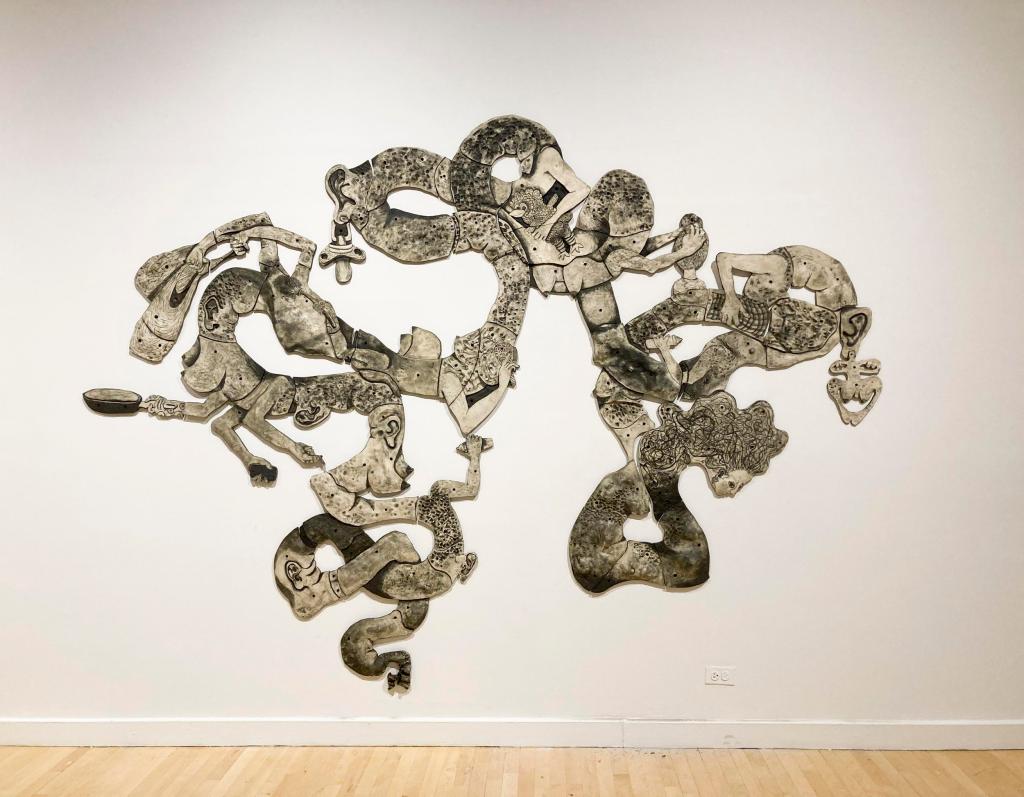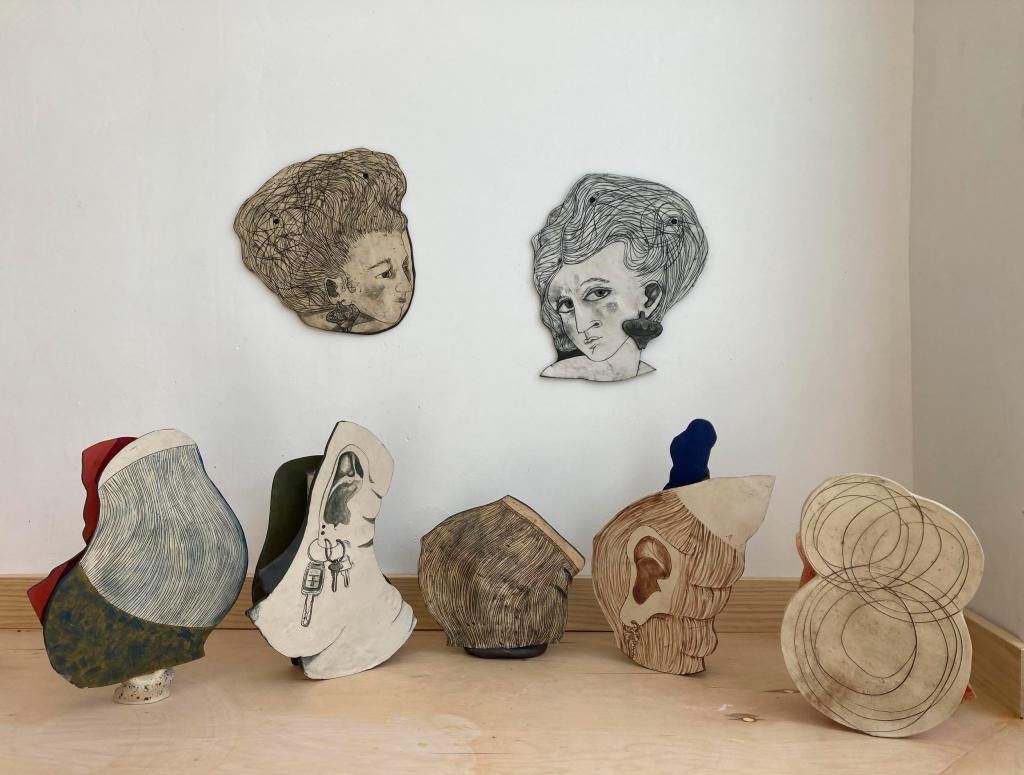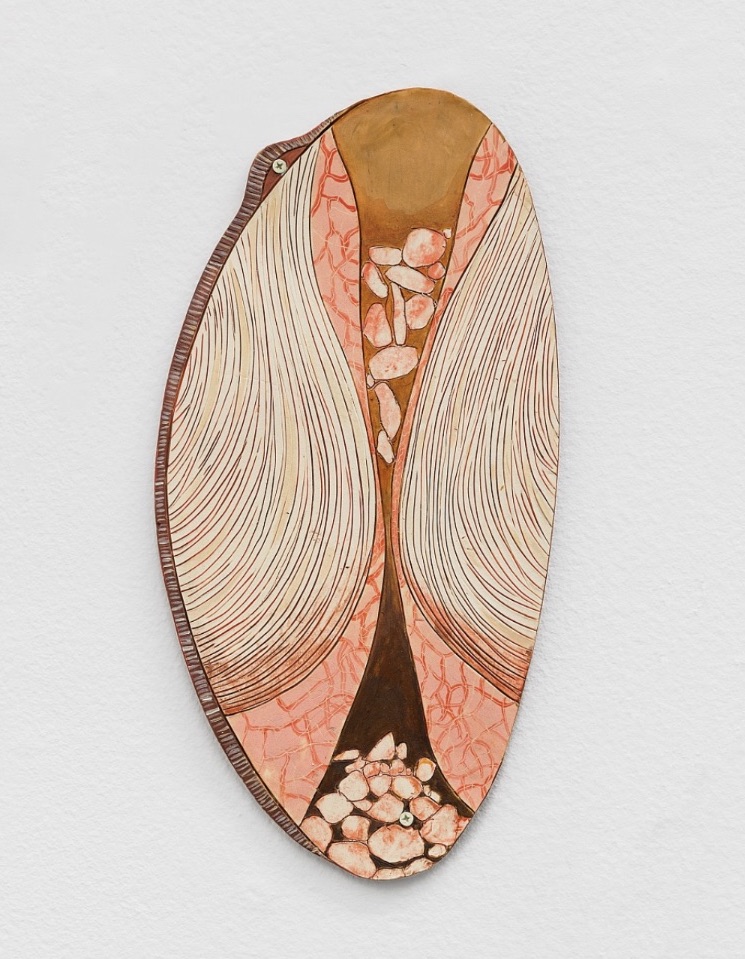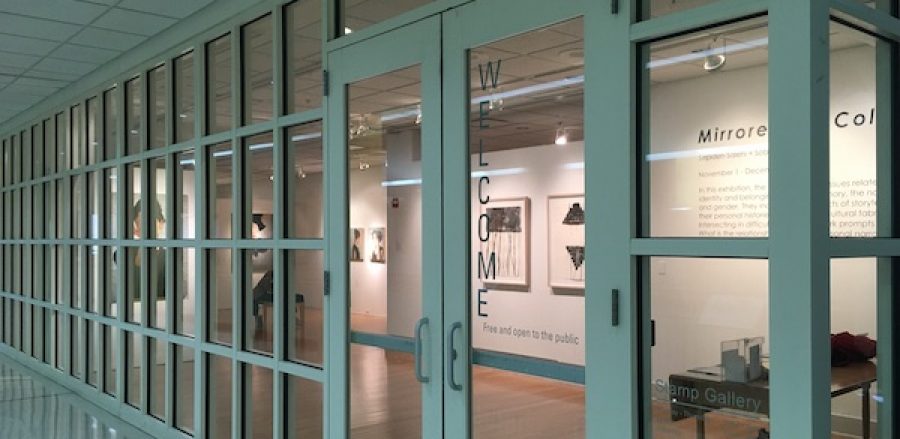The clock strikes Infertile: Gabriela Vainsencher’s Hourglass
Posted: September 29, 2023 Filed under: Contemporary Art Purchasing Program (CAPP), Current Exhibition, Explore, Uncategorized | Tags: aging, art, ART AND ACTIVISM, contemporary, Contemporary Art, Gabriella Vainsencher, installation, motherhood, sculpture, stamp gallery, Stamp Student Union, UMD, womanhood Leave a commentWhat We Do After from August 28 to September 30, 2023 at The Stamp Gallery | University of Maryland, College Park | Written by Reshma Jasmin
*Note: this post refers to womanhood and motherhood in a cis-normative manner due to the organ-centric focus of aging*
In the past three months, my father has brought up the topic of marriage, babies, and my biological clock three times—I am a 21-year-old college student. He likened my ova as the fruits of a mango tree: after it reaches its fruit bearing age, the best mangoes are those produced in the first three years. Ironically, I have endometriosis, so the question of fertility is up in the air.
Gabriela Vainsencher’s Hourglass emanates this anxiety, by creating the anatomy of a cervix in the shape of an hourglass, with menstrual blood slipping through the cervix like sand. But Vainsencher’s experience differs from mine, which makes sense as she is 20 years older, an established artist, and a mother. She is also a cis-woman who went through pregnancy and labor for her own biological daughter, and she depicts womanhood and motherhood within the realm of her personal experience. So the impending midnight strike of a biological clock means something entirely different for her than it does for me.

Most of Vainsencher’s recent work focuses on the experiences of motherhood, notably Mom (2021) (pictured above). She describes the piece as “…a self-portrait inspired by living through the covid-19 pandemic, which started when my daughter was one year old. For over a year I cared for her, worked from home, and couldn’t get to my studio” (sourced from artist’s website). The large porcelain piece depicts a snake-like figure of arms and breasts doing various motherly tasks. The breasts are arguably what makes the biggest impact. Their literal function is to provide milk, and whether mothers use formula or breastmilk, the symbolism still stands: motherhood is allowing your nutrients to be sucked out of you, or in more palatable terms, giving up yourself for your child. While all the arms are occupied with various motherly tasks like cooking, shopping, cleaning, carrying a child, etc., there are just as many breasts as there are arms, even though breasts only serve one main function in motherhood. Although there is also the long haired head at one end of the figure and the title to distinguish that the figure is a woman, a mother, the abundance of breasts hint at what else society demands of mothers: women who maintain their role as pretty sexual objects.

Vainsencher’s Mother Figure Series Sculptures (pictured above) depicts worried mothers, pregnant bellies, female anatomy, and the looming biological clock. The stretched, protruding bellies and the folds of skin on the backs of each torso show the toll of pregnancy on the body. The sagging breast depicts the loss of conventional beauty and youth that comes with age and motherhood. The key-chain earrings on oversized ears suggests that mothers are always in motion, always thinking about their children’s needs and schedules.

Upon seeing Gabriella Vainsencher’s Hourglass (pictured above), my first thought was, “How is this mounted on the wall?” Granted, I was watching the early stages of its installation in the Stamp Gallery, and the piece is made of porcelain and glaze, so it seemed a bit delicate to be held up the way that it is (on two screws drilled through the porcelain). In my surprise at how securely the piece was mounted, I realized that my assumption about the fragility and “weakness” of the porcelain was similar to the societal perception of women as the “weaker sex.” But the curved lines of the stretchy maternity pants on the conflated pregnant bellies from Vainsencher’s Mother Figure Series Sculptures and the bulges with the same curved lines tell a different story: they resemble striated muscles, signifying the strength written into a mother’s body.
The muscle-like bulges also create the hourglass shape, and lead the eye to the center of the piece, the cervix. The transition from the warm, cozy golden brown of the uterus to the dark dried period blood of the vaginal canal resembles the passage of time and a movement from comfort to discomfort. This gradient coupled with the rock-like shapes in the two halves of the hourglass shape depict the pain of aging; each period brings one closer to menopause, and the hourglass figure of a conventionally beautiful woman is also lost with time. Simply put, in our culture, old women are not pretty. The biological clock is a term coined by men to describe how a woman’s fertility is headed towards the precarious cliff of the age of 30 and later at menopause, but it also describes the anxieties of women where their worth and standing in society hangs in the balance of their beauty and fertility.
The rock-like forms passing through the hourglass resonate with me, as periods and ovulation involve immense pain due to endometriosis. And, despite not being a mother, nor subscribing entirely to the identity of woman, nor intending to experience pregnancy and have a biological child; the fear of losing fertility and youth translating to the loss of beauty and worth is an anxiety I share in my own experience. With Hourglass, Vainsencher depicts the universal fear of aging, unique to those who identify as women and have female sex organs, as being built into our bodies as a ticking biological clock, a constant reminder of our fears and strength and worth.
Gabriela Vainsencher’s work is included in What We Do After at The Stamp Gallery of the University of Maryland, College Park, from August 28 to September 30, 2023.
For more information on Gabriela Vainsencher visit https://gabrielavainsencher.com/
For more information on What We Do After, and related events, visit https://stamp.umd.edu/centers/stamp_gallery
For more information about the Contemporary Art Purchasing Program (CAPP) visit: https://stamp.umd.edu/centers/stamp_gallery/contemporary_art_collection
